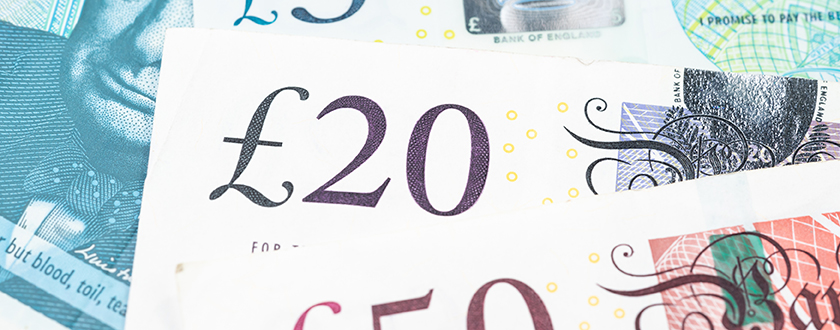
Will the £50 polymer be the last hurrah for cash?
14th January 2020The Bank of England has made it easy to remember when its new £20 note will enter circulation: 20 February 2020. The polymer £20 will be its third non-paper banknote, following the £5 in 2016 and the £10 in 2017. As announced in 2016, the new £20 will feature the English artist JMW Turner and two of his paintings – a self-portrait and his acclaimed 1838 work ‘The Fighting Temeraire’.
Experience with the £5 and £10 versions has clearly shown that polymer notes are more resilient than their paper predecessors. They are also designed to be more secure and the popular £20 denomination will have numerous features to distinguish it from fakes. Those features include raised print, holograms, see-through windows, foil patches and a multicoloured UV-readable ‘20’. A polymer version of the less-often-seen £50 note should appear by the end of 2021.
Canadian club
Back in 2011, Canada joined a growing list of countries to adopt polymer banknotes. The Bank of Canada started with a $100 bill that year and by the end of 2013 a complete set of polymer notes was in circulation. The last two denominations, $5 and $10, were revealed in April 2013 by the Canadian central bank’s governor, one Mark Carney. Three months later, Mr Carney had become governor of the Bank of England, which soon after announced its plans for polymer banknotes.
Though there are good reasons to say ‘hurrah for polymer banknotes’, could the planned £50 turn out to be the last hurrah for cash? By the end of 2021, the march of the cashless society will be even further down the road. Trade body UK Finance says debit card payments caught up with cash in 2017 and along with other hi-tech methods these are racing ahead as cash use declines. In 2018, some 28% of all UK transactions were in cash; UK Finance projects that this will fall to 9% by 2028.
Not a spent force yet
So, will our new polymer banknotes have a meaningful role throughout the 2020s? Unless UK Finance projections for cash are revised further downwards, the answer to that must be yes. Those projected 9% of transactions in 2028 equate to about 4bn in number, meaning cash won’t be a spent force any time soon, not in the UK at least; which raises questions about trends in other countries.
According to market and consumer data experts Statista, the UK stands in the middle ground of contactless point-of-sale transactions in Europe, with a penetration rate of 46%. By comparison, Germany has been rather wary of new methods and is assessed at just 14%. Its neighbour Poland, however, scores 83%. For complex reasons, France and Spain also have contrasting attitudes to payment options, with ratings of 25% and 57%, respectively.
In the USA, the Federal Reserve Bank of San Francisco has raised concerns about businesses that no longer accept cash. It says some 8m US households are unbanked and thus excluded, but recognises the business advantages of eliminating cash handling, cutting theft risk and speeding-up payments. FRBSF quotes data showing 11 cash transactions in takeaways, restaurants, gas stations and general stores out of an average monthly total per person of 31 ‘brick-and-mortar’ transactions.
The pace of change in recent years took many people by surprise and the projected future trends in payment methods could be similarly overtaken by events, but it looks as if cash will still have a UK role another decade on. The new £50 and other polymers could be pressed into long service, as the cost and disruption of another new note series may be hard to justify in the 2030s, though the sensitive issue of a redesign upon a change of monarch is ever-present.
